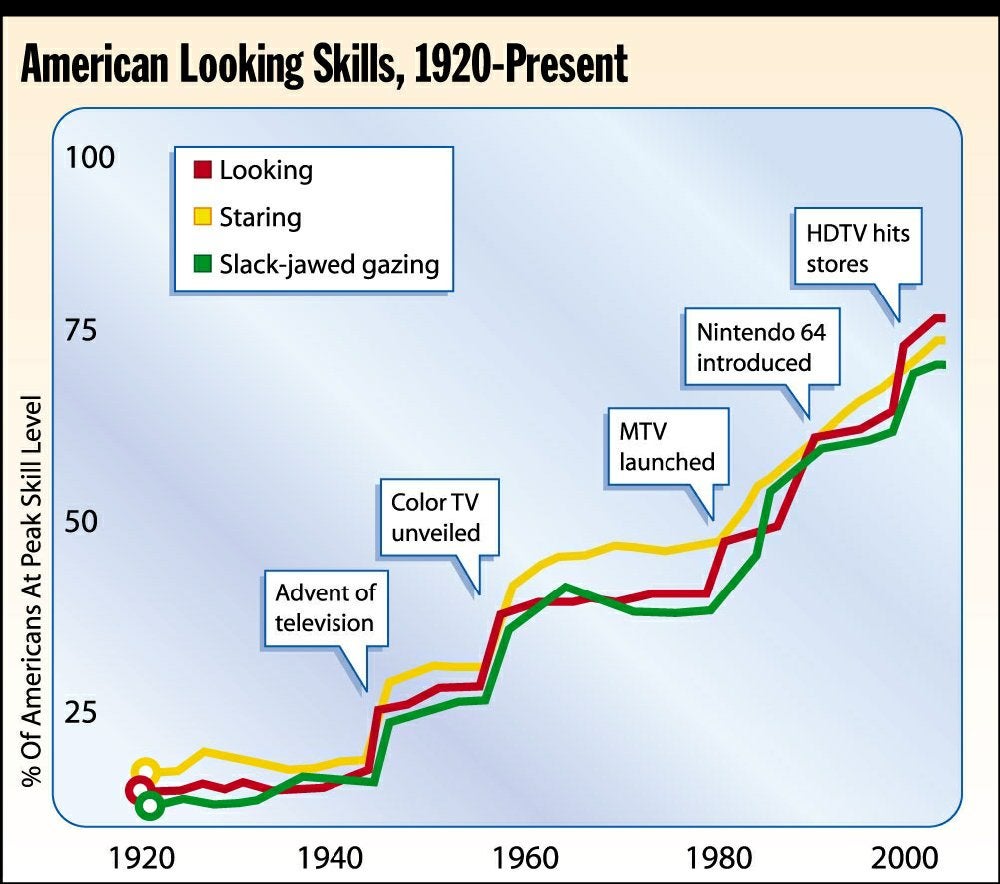NEW YORK—A report released Monday by NYU’s Center For Media Studies has found that television, accused by experts of diminishing children’s attention spans and discouraging them from interacting with others, can actually help children as young as six months develop essential looking skills.

“In a study of over 5,000 children nationwide,” the report read, “those who watched cartoons for three hours had vastly increased looking capacities when tested the next day, compared to children who were encouraged to play sports and board games with other children for the same three-hour period. Staring and gazing skills were also markedly higher.”
Data gathered in the study also indicated that visual-reception skills acquired at an early age tend to become lifelong assets.
“Extensive testing of adults who grew up in homes without television showed that such adults had difficulty staring blankly at things for longer than a few seconds,” Center For Media Studies director Dr. Edward DeGaetano said. “They frequently shifted their gaze and focus around the testing environment, often engaging others in the room in conversation and generally making a lot of disruptive noise and movement. Television-enriched adults, however, could sit and look at anything: a spot on the ceiling, a fire-alarm box, a stack of magazines on a table.”
“And even when the non-television-enriched adults could manage to look at a magazine,” DeGaetano said, “rather than deep-focus on the cover, they would open it and start restlessly looking at words and turning the pages.”
The NYU study is seen as a major victory for television advocates.

“Fifty years ago, U.S. children were ranked almost dead-last worldwide in looking skills,” said child-development expert Dr. Sandy Wexler. “The past five decades have witnessed remarkable progress in that area, so much so that U.S. children now lead the world. Students in supposedly progressive nations like Sweden and France score far lower than Americans in standardized looking tests.”
Wexler pointed to TV as the primary reason for the improvement, along with increased media attention, including the best-selling 1977 book Why Johnny Can’t Look and NBC’s early-’80s “How To Watch Television” public-service announcements.
“These 30-second spots starring zany comedian Lenny Schultz left no ambiguity in the minds of children who viewed them about how to properly watch television,” Wexler said.
President Clinton praised the nation’s children for their looking prowess at a press conference Tuesday. He also announced the launch of a $1 billion “Looking Good, America!” initiative designed to provide impoverished children with badly needed televisions.
“Far too many of our economically disadvantaged young people,” Clinton said, “have nothing better than outdated black-and-white sets, dating back to the ’80s or even ’70s, to look at.”
The president concluded with the sad tale of Beckley, WV, 10-year-old Nicholas Mullins, who, according to Clinton, gets all of his television from “a 1982 black-and-white Zenith TV with a 13-inch screen, an antenna fashioned from a coathanger and aluminum foil, and an unpredictable vertical hold.”
“Child-development statistics tell us that Nicholas will probably do no better than graduate from high school looking at a third-grade level,” Clinton said. “If we cannot give Nicholas a better chance in life, then we as a nation have failed him.”







